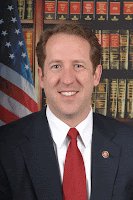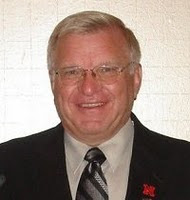 |
| Senator Tom Carlson District 38 |
The Legislature is now at the 1/3 mark of the 90 day session. Afternoon hearings were postponed last week due to the storm in western and central Nebraska and the impending storm in Lincoln. Those bills will be heard the morning of March 5th.
The Central Plains Irrigation Conference in Kearney asked me to be on the February 26th program. I talked about Senator Christensen’s bill, LB 185, which involves a loan from the cash reserve to allow construction of pipelines from Lincoln County to the Republican and Platte Rivers. The work, to begin in 2013, is needed for compliance reasons and river recovery. I also talked about LB 517, the bill I introduced to create the Water Sustainability Task Force. The task force will use the LR 314 report as a basis and, with input from groups concerned with water issues, recommend a strategic 20 year water plan for Nebraska.
LB 515, which I will introduce in front of the Government, Military and Veterans Affairs Committee tomorrow, would expand the definition of “electors” of irrigation districts to acknowledge different types of land ownership interests that might not have been in effect when the original law was passed. Examples would be joint tenants, tenants in common, corporate interests, and life estates, among others. The bill would also allow irrigation districts to conduct elections by mail to provide cost savings and hopefully increase participation in elections.
Of interest to counties and cities is LB 363, which clarifies how the public can access government records. The bill proposes that a public agency or other political office can charge a fee for making copies of public records, but it can not exceed the actual and reasonable cost of making the copies. The bill specifies that charges will not commence until staff spends up to four hours searching, identifying, and copying the records. There was extended discussion on the measure before it advanced to the second round of debate on a vote of 35-1.
As widely publicized in the media, the Governor asked the Revenue Committee to kill his package of tax bills. I appreciate all the emails and other communications to my office concerning your anxiety about our agriculture and manufacturing segments, should any part of those bills pass.
A bill introduced by Senator Schumacher would establish the Tax Modernization Commission to review and recommend updates to Nebraska’s tax code. LB 613 was endorsed by the chair of the Revenue Committee, Senator Hadley of Kearney. Most agree that Nebraska’s tax code is in need of study and equitable reform.
I believe a study which puts all tax exemptions up for consideration is appropriate. The truth is, it is easier to give a tax exemption than it is to take it away. We live in the real world and must be aware of and consider what states around us are doing in the tax arena.
We should want to be the best. To attain that position we need a tax policy that is friendly and understanding to agriculture, our number one industry. Other segments of our economy must also be considered so our citizens can thrive and experience the “Good Life” we all desire.
The Central Plains Irrigation Conference in Kearney asked me to be on the February 26th program. I talked about Senator Christensen’s bill, LB 185, which involves a loan from the cash reserve to allow construction of pipelines from Lincoln County to the Republican and Platte Rivers. The work, to begin in 2013, is needed for compliance reasons and river recovery. I also talked about LB 517, the bill I introduced to create the Water Sustainability Task Force. The task force will use the LR 314 report as a basis and, with input from groups concerned with water issues, recommend a strategic 20 year water plan for Nebraska.
LB 515, which I will introduce in front of the Government, Military and Veterans Affairs Committee tomorrow, would expand the definition of “electors” of irrigation districts to acknowledge different types of land ownership interests that might not have been in effect when the original law was passed. Examples would be joint tenants, tenants in common, corporate interests, and life estates, among others. The bill would also allow irrigation districts to conduct elections by mail to provide cost savings and hopefully increase participation in elections.
Of interest to counties and cities is LB 363, which clarifies how the public can access government records. The bill proposes that a public agency or other political office can charge a fee for making copies of public records, but it can not exceed the actual and reasonable cost of making the copies. The bill specifies that charges will not commence until staff spends up to four hours searching, identifying, and copying the records. There was extended discussion on the measure before it advanced to the second round of debate on a vote of 35-1.
As widely publicized in the media, the Governor asked the Revenue Committee to kill his package of tax bills. I appreciate all the emails and other communications to my office concerning your anxiety about our agriculture and manufacturing segments, should any part of those bills pass.
A bill introduced by Senator Schumacher would establish the Tax Modernization Commission to review and recommend updates to Nebraska’s tax code. LB 613 was endorsed by the chair of the Revenue Committee, Senator Hadley of Kearney. Most agree that Nebraska’s tax code is in need of study and equitable reform.
I believe a study which puts all tax exemptions up for consideration is appropriate. The truth is, it is easier to give a tax exemption than it is to take it away. We live in the real world and must be aware of and consider what states around us are doing in the tax arena.
We should want to be the best. To attain that position we need a tax policy that is friendly and understanding to agriculture, our number one industry. Other segments of our economy must also be considered so our citizens can thrive and experience the “Good Life” we all desire.



